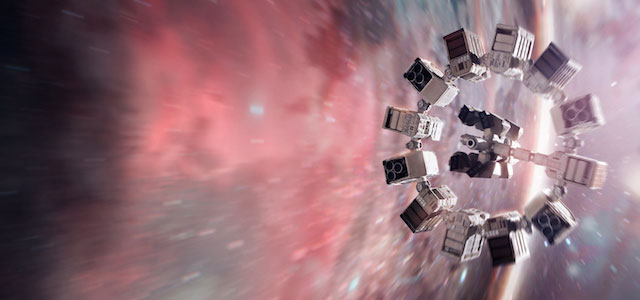
We're counting down to the release of Oppenheimer by looking back at Christopher Nolan's movies in order.
The director's latest project is a typically secretive affair, tracing the development of the atomic bomb. Cillian Murphy plays J. Robert Oppenheimer, the man who sent humanity careering in a dark new direction, and the remarkable supporting cast includes Emily Blunt, Matt Damon, Florence Pugh and Robert Downey Jr.
Clad in fiery vistas that herald the birth of brand-new 20th-century warfare, Oppenheimer is poised to be a feast for the senses and the emotions. Nolan splits the aesthetic of the movie between timeline and colour, promising a truly epic delve into an epochal moment in human history. As expected, Nolan has captured the movie on IMAX cameras, resulting in apocalyptic sequences that promise to take the breath away.
This week, we're examining Nolan's ninth feature film: Interstellar.
What is the story of Interstellar?
Years into the future, life on Earth is a struggle in the face of blight and drought. It's becoming increasingly apparent that our planet can no longer sustain human life, and a quest needs to be undertaken to find a new home.
Okra farmer and ace pilot Cooper (Matthew McConaughey) is led by a mysterious signal to a top-secret interstellar project, headed up by NASA scientist Professor Brand (Michael Caine). As Cooper's former mentor, Brand trusts him to undertake the physically dangerous mission, but it will require Cooper to leave his beloved daughter Murph (Mackenzie Foy) on Earth.
Nevertheless, he agrees to head out into space with Brand's daughter Amelia (Anne Hathaway) and a select crew of experts. The journey will involve travelling through a black hole, which will subsequently lead to a host of extraordinary planets where physics and time are bent out of all proportion. All the while, Cooper must reconcile the gravity of his mission with what he's left behind, and the personal nature of his odyssey soon takes some shocking turns.
How was Interstellar made?
Come 2014, writer-director Christopher Nolan had carved out an enviable niche. In the wake of his blockbusting Dark Knight trilogy, which had concluded with 2012's The Dark Knight Rises, he was invincible as far as the box office was concerned. Yet Nolan had also achieved near-unbroken levels of critical acclaim, for both his Batman movies and also his more challenging, non-linear offerings like Memento and The Prestige. The ability to both entrap an audience and seduce the critics meant that Nolan could operate comfortably within franchise boundaries, while also earning the right to make deeply personal, mega-budget epics on his own steam.
The latter point is exemplified by 2010's Inception, an original Nolan concept that many had anticipated would be too tricksy for mainstream consumption. When the movie went on to gross more than $800 million worldwide, it was not only vindication for intelligent, brainy mass-market entertainment, but also Nolan's brand of cerebral, engrossing storytelling. It proved that he didn't need Batman iconography in order to ensnare a huge audience. This, in turn, would empower him to make Interstellar for his regular distributor Warner Bros, a story about deep space travel that would also incorporate quantum physics.
When described like that, it's hard to imagine any director other than Nolan getting licence to make the movie. Who wants a big-screen space lecture? Of course, Inception had proved Nolan's skill at mixing exposition and complex layers of narrative with eye-popping spectacle. And such an approach would now be pushed even further in Interstellar, as Nolan vowed to make real the most authentic depiction of a black hole ever seen in cinema.
And yet, like Inception, the nature of Interstellar is fundamentally intimate and driven by a humane focus. In the former movie, Leonardo DiCaprio's mind heist expert Dominic Cobb is haunted by the spectre of his late wife Mal (Marion Cotillard). In the latter, there's a dynamic contrast between the needs of deep space exploration and the emotional anguish over those who have been left behind. For all its wordy, verbose trappings about black holes and physics, Interstellar is centrally about a father pining for his estranged daughter.
Of course, in the development stages, the physics had to come first, owing to their complexity. Interstellar first started to take shape in 2007 when Nolan's brother Jonathan (who wrote the short story on which Memento was based) was hired to write a screenplay. At the time, Steven Spielberg was set to direct, Paramount was to distribute and Jonathan Nolan was to adapt an eight-page treatment set out by theoretical physicist Kip Thorne, who had worked on Robert Zemeckis' 1997 movie Contact. When Spielberg later moved his DreamWorks production company from Paramount to Disney, a new director was sought.
Jonathan Nolan suggested his brother Christopher and the latter eventually signed on to the project in March 2013. Thorne was still attached in an executive producer capacity and Nolan would actively consult him throughout the production, particularly during the conception of the film's black hole, named Gargantua. Nolan would work with his brother to revise the script, all the while seeking to inject greater authenticity by visiting various NASA sights and incorporating his discoveries into the screenplay, along with Thorne's suggestions. Nolan was keen to keep his brother's emphasis on human struggle in a dystopian future, particularly during the first third, which invokes the Depression-era dustbowl in North America.
Of Thorne's involvement, Nolan told NPR: "It was mostly him saying, 'Here are the possibilities of real-world science.' But there was one example of where he just wouldn't let me go there. I wanted a character to travel faster than the speed of light, and he spent about two weeks just beating me down and explaining to me it's absolutely not possible. And I finally had to sort of concede."
Nolan added: "We never really worried too much about, you know, the idea of Kip's peers sort of moaning about the film or whatever. ... I think the audience can feel whether there's a rule set behind what you're doing, and I think they can feel when you're becoming anarchic and just sort of abandoning and saying, 'Well, it's just a movie.'"
Already, Nolan's characteristic attention to detail was helping to shape the early stages of the production. But far from treating Interstellar as a dry theoretical exercise, Nolan was keen to stress the personal nature of the project. This was his first film set in outer-space, and he recalled the awe he felt when watching Star Wars for the very first time.
Nolan recalled: "I think right from the moment that I saw George Lucas' first Star Wars it was cemented in my mind as being the sort of maximum potential of the Hollywood blockbuster, if you like. I mean, there's a golden age of blockbusters that I grew up in: You had Lucas, you also had [Steven] Spielberg, you know, Close Encounters [of the Third Kind], these films. They really spoke to me about the potential of what movies can do in terms of taking an audience on an adventure."
Already, there was a clear tension between the need to respect an audience's intelligence (a la Inception) in terms of the physics, and the need to whisk them on a visually arresting journey. These contradictory elements would be borne out in the reviews for the movie (more on which momentarily), but there's no denying Nolan had the creative freedom and clout to do the project justice. Warner Bros emboldened him with an enormous $165 million budget and, armed with a new cinematographer, Hoyte van Hoytema, Nolan began principal photography in late 2013.
Hoytema replaced Nolan's signature cinematographer Wally Pfister, who was at this point hip-deep in shooting his directorial debut Transcendence. (That movie, starring Johnny Depp, would turn out to be a critical and commercial disaster.) At the same time, many of Nolan's regular collaborators remained, including composer Hans Zimmer. Interstellar is perhaps the finest work Zimmer has ever done for the director, although he's got a clear advantage that the movie is set in space, and there's less competition from extraneous sound design than in Nolan's other films. The score deploys the pipe organ to give a yearning, almost religioso slant to Cooper's quest, spurring him on while also evoking a sense of melancholy sadness.
Reddit user baconarcher went to town in analysing Zimmer's music for the Miller wave planet sequence. The scene is accompanied by ticking on Zimmer's soundtrack, and baconarcher surmised that one tick is equal to an entire day on Earth. This comes back to haunt Matthew McConaughey's character Cooper later on.
Interstellar was shot in a host of global locations, with Iceland's wondrously otherwordly atmosphere standing in for two of the film's planets: the wave-blighted Miller and the ice-ridden world on which Cooper finds stranded scientist Mann (Matt Damon). Icelandic locations included the Svínafellsjökull glacier and the town of Klaustur. As with The Dark Knight and The Dark Knight Rises, Nolan designed several sequences to be shot with IMAX cameras; cinematographer Hoytema used various adaptations, including a camera inserted into the nosecone of a Learjet. (This would anticipate the effort needed to attach equipment to a World War II fighter plane in the later Dunkirk.)
As ever, Nolan proved averse to using CGI, with an emphasis on tactile practical effects. Of course, with the film being set in space, more CGI was needed than in Nolan's other movies. Nevertheless, there's still a remarkable amount of physical wizardry on display in the movie, notably the tesseract sequence where Cooper bends space and time to make a remarkable discovery about his daughter Murph. On the big screen, it emerges as a kind of weird inter-dimensional bookcase, and it gave Nolan and his crew pause for thought.
Remarkably, the sequence was completed on a massive set, with minimal digital input. It speaks volumes about Nolan's ambition, not to mention the level of trust he engenders in his crewmembers. Yet the scene really resonates because of McConaughey's performance. The actor had been cast off the back of his performance in acclaimed drama Mud, with Nolan citing the need for an "everyman hero". McConaughey's recognisably anguished reactions throughout the movie, but especially in this pivotal scene, encapsulate the philosophy behind Interstellar. It may appear to be pre-occupied with scientific bells and whistles, but it is in fact Nolan's most overtly emotional movie.
This is especially evident during the film's most affecting sequence, in which Cooper returns from wave planet Miller to discover he has lost several years of Earth time. Playing back a message from a now-grown-up Murph (Jessica Chastain), Cooper is shattered by all that he has lost. It's an important grounding element in a movie that walks the line between entertainment and alienation, particularly in the black hole explanation scene (which is stolen wholesale from cult classic horror Event Horizon).
Nevertheless, it's a riposte to those who claim Nolan's movies to be cold and unfeeling. But had he in fact swung too far the other way with this movie?
How was Interstellar received?
In contrast to Nolan's usual critical raves, Interstellar generated something of a polarized response. While many applauded his typically ambitious visual mastery, not to mention his integration of quantum physics into an IMAX-friendly blockbuster, many felt that his reach exceeded his grasp. In particular, the reliance on clunky exposition about love transcending time came in for criticism, as did the abrupt swerves between clinical science and mawkish sentimentality.
Peter Bradshaw wrote in The Guardian: "What remains is style, and Nolan has got plenty of that. He gives us more of his signature universe-manipulations, in which the ground or sea will turn up 90 degrees, like a surreal cliff-face: huge, dreamlike and wrong. It’s exhilarating. But Interstellar’s deep space turns out to be shallower than we expected."
Reviewing the movie for BBC Radio Five Live, Mark Kermode said the film was a somewhat overblown cousin of Robert Zemeckis' superior Contact, from 1997. Nevertheless, he lauded "Nolan's faith in the image", citing a legacy of visual cinema stretching back to the likes of The Ten Commandments. Kermode also said the film lacked the "rigour" of Nolan's earlier films such as Memento.
Harsher criticism came from the likes of The Wall Street Journal's Joe Morgenstern: "Christopher Nolan's 168-minute odyssey through the space-time continuum is stuffed with stuff of bewildering wrongness."
Writing for Vanity Fair, Richard Lawson observed: "I can imagine, in some other galaxy or dimension, a more exciting Interstellar, one that is more coldly curious about all that lies beyond human perception... What a shame that a movie that flings us so far into the scary wonders of the cosmos ultimately decides that, despite all the evidence to the contrary, us silly humans really are the center of it all."
Nevertheless, the film had just as many outspoken admirers. Writing for the Chicago Sun-Times, Richard Roeper raved: "This is one of the most beautiful films I have ever seen — in terms of its visuals, and its overriding message about the powerful forces of the one thing we all know but can’t measure in scientific terms."
And Rolling Stone's Pete Travers also confessed to being a fan: "What the neg-heads are missing about Interstellar is how enthralling it is, how gracefully it blends the cosmic and the intimate, how deftly it explores the infinite in the smallest human details... Even when Nolan strains to verbalize feelings, and the script he wrote with his brother Jonathan turns clunky, it’s hard not to root for a visionary who’s reaching for the stars."
Ultimately, Interstellar would win the Oscar for Best Visual Effects; it was also nominated for four others, including Best Original Score. Even when proving more divisive than usual, Nolan could claim a sense of artistic achievement. And, as ever, he had the box office to back him up: Interstellar grossed a healthy $690 million against its $165 million budget. Once again, Nolan proved that an audience will be interested in heady concepts if you pitch them right and contextualise them within arresting visuals.
What was the next Christopher Nolan movie?
Dunkirk was Nolan's next movie, released in 2017.
Oppenheimer is scheduled for release on July 21st. Click the link below to get your tickets and let us know what your favourite Christopher Nolan movie is @Cineworld.
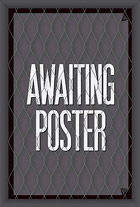
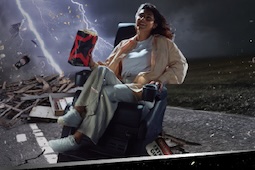
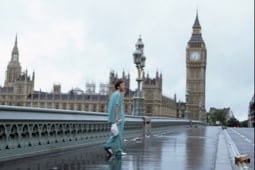




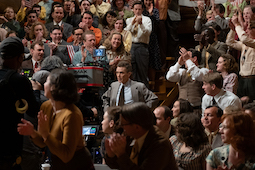

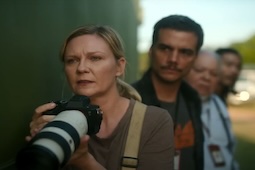

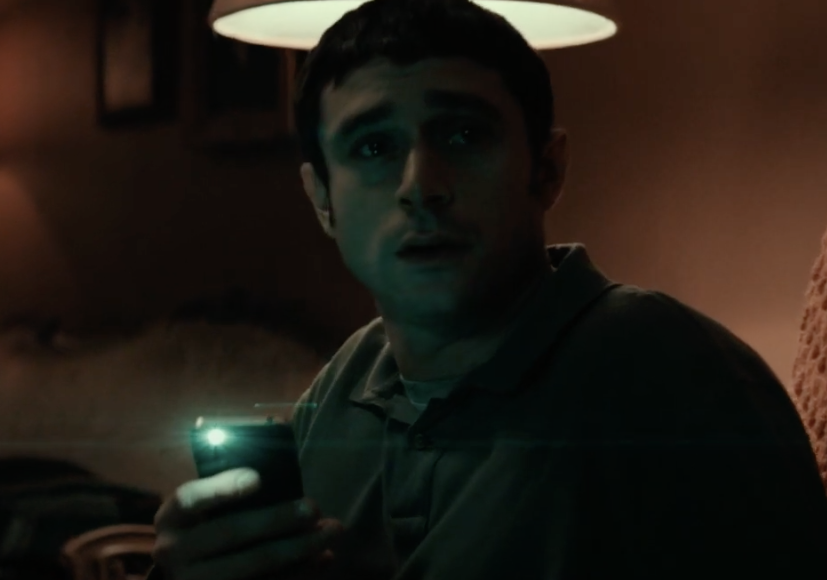
.jpg)


.jpg)
.png)






